|
|
Sidney and Neff Map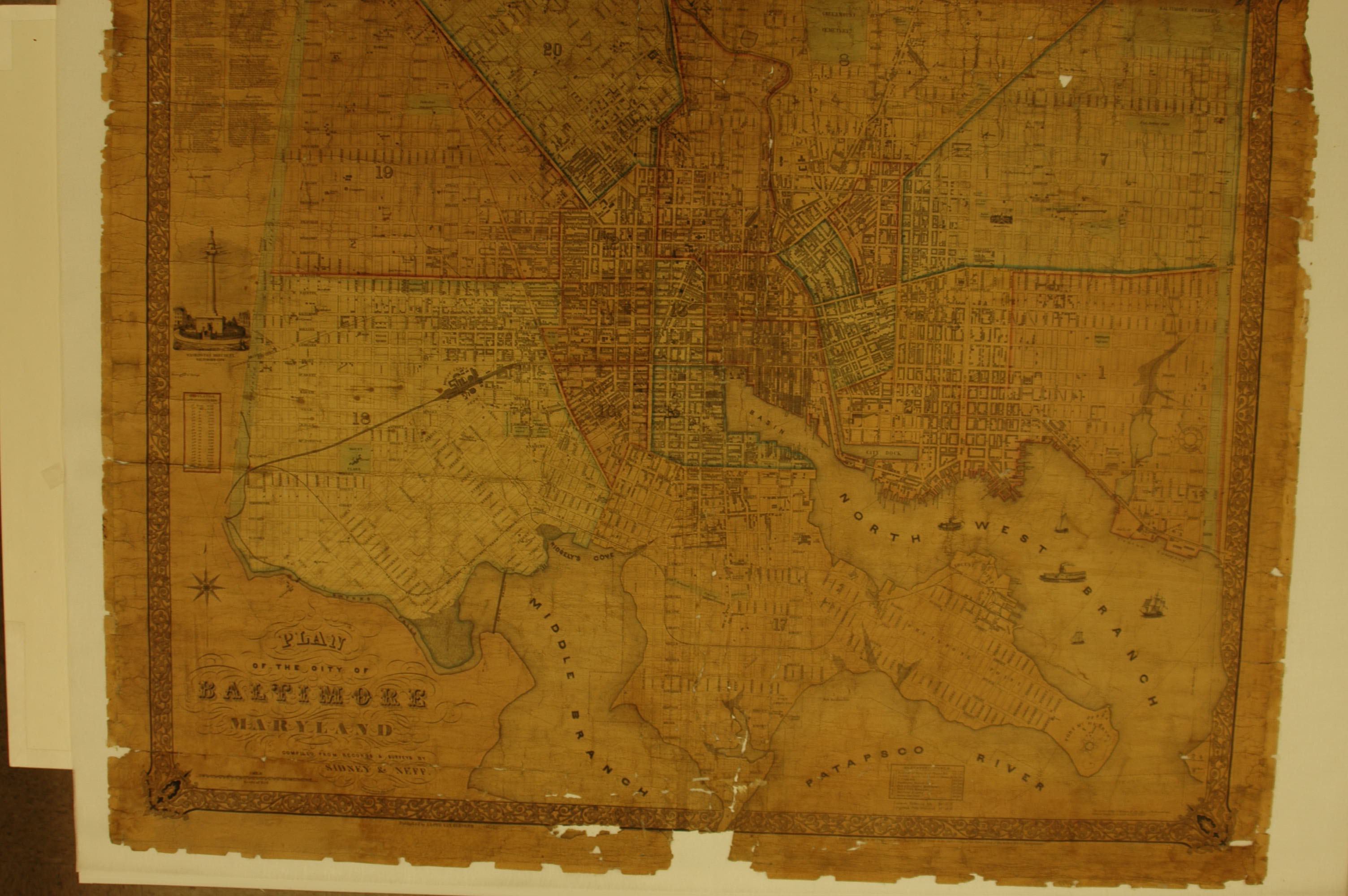
This document is a large wall map published by Lloyd Van Derveer in 1852. It is titled,"Plan of the City of Baltimore, Maryland, Compiled from Records and surveys by Sidney and Neff". The Library of Congress also owns a copy of this map. When Conservation first received this map it was backed in canvas and wound onto a roller. To prepare the map for scanning Conservation removed the roller and the black cloth tape from around the edge. Since the map was in delicate condition, it was then encapsulated in a mylar sleeve before being sent to scanning. 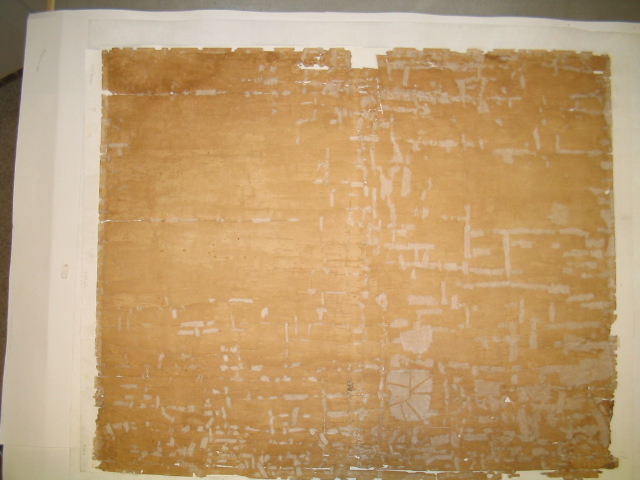
After scanning was completed, it was decided that the condition of the map was too poor to get an accurate scan so more conservation work was requested. The canvas backing was carefully removed as well as the shellac coating and any embedded dust and dirt. After the backing was removed the paper was in extremely delicate condition and before any more work could be attempted, Conservation decided to mend any major areas of disrepair with Japense tissue and wheat starch paste, a reversible method of repair. You can see the tissue mends on the backside of the map in the photo to the right. The next step in conserving the map was to carefully clean the paper using a large vacuum suction table and dionized water. First, black plastic trash bags were used to mark off the area of the table that would not be covered by the map. The trash bags helped keep the the vacuum sucking dirt evenly. Then the map was carefully flipped so the front side was facing up. If we had not flipped the map, any dirt on the surface of the paper would have been sucked through the map from back to front, leaving any residue on the front of the map. Below you can see photos taken during the washing process. One of the problems during washing was dealing with such an oversized and fragile document. It was difficult to get all the pieces of map that had cracked over time to line up again. And since the map had been backed and shellaced and then treated to remove both the backing and the shellac, the paper had changed shape, making it even more difficult to attempt to return it to its original state. 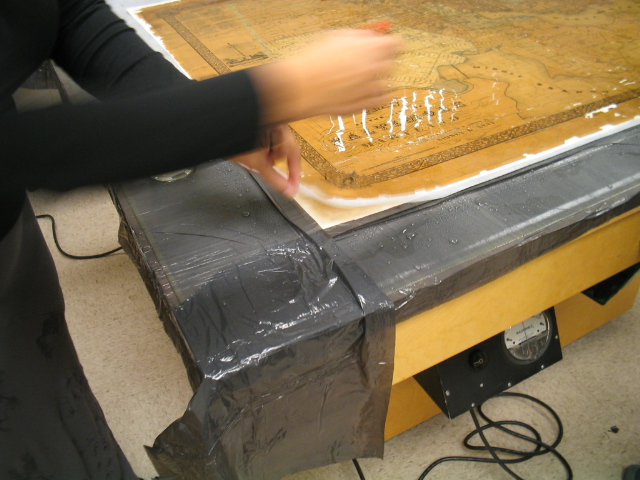
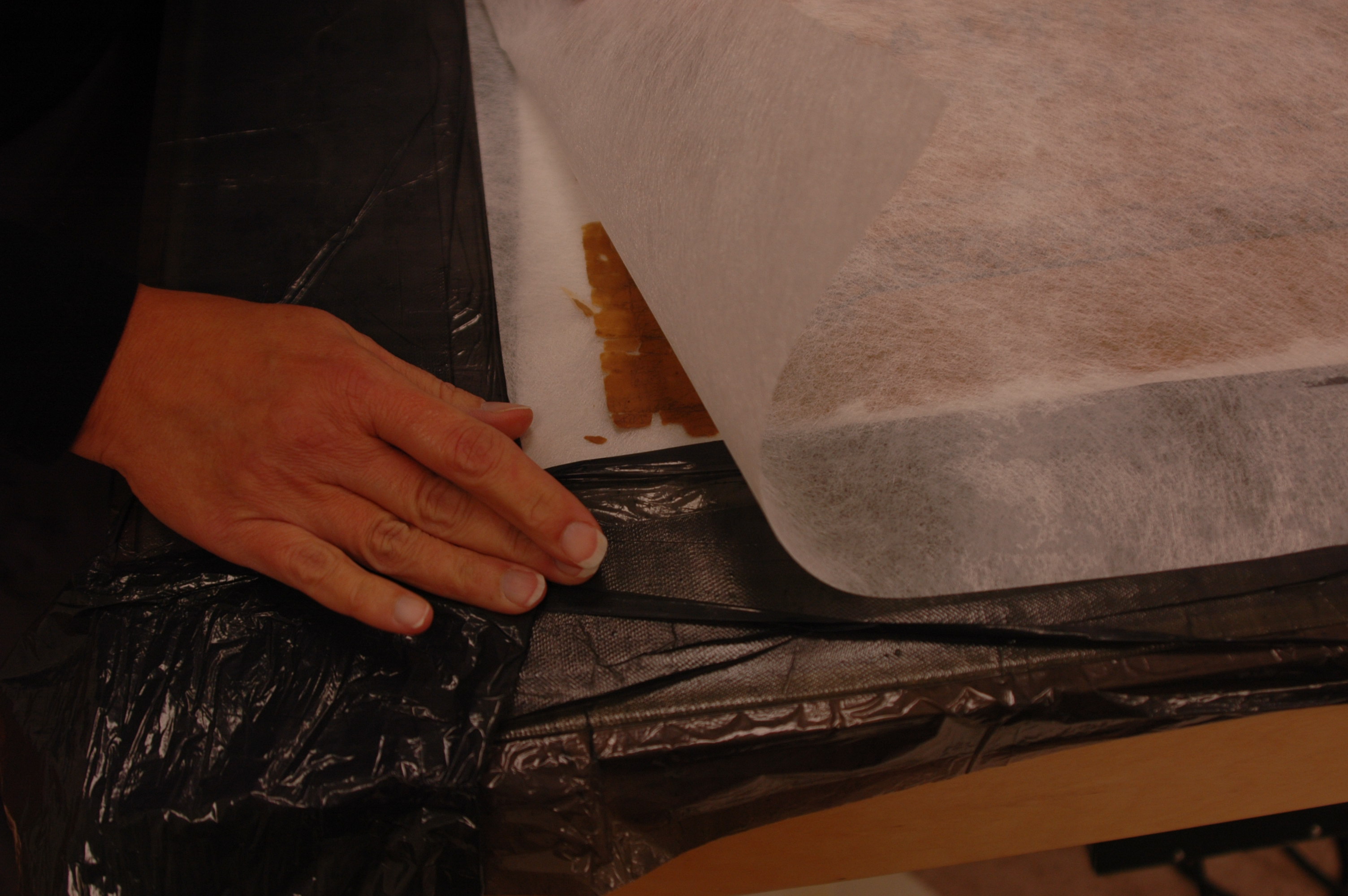 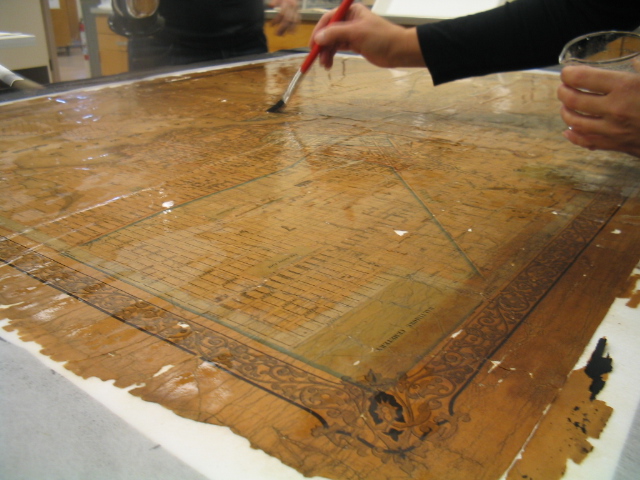
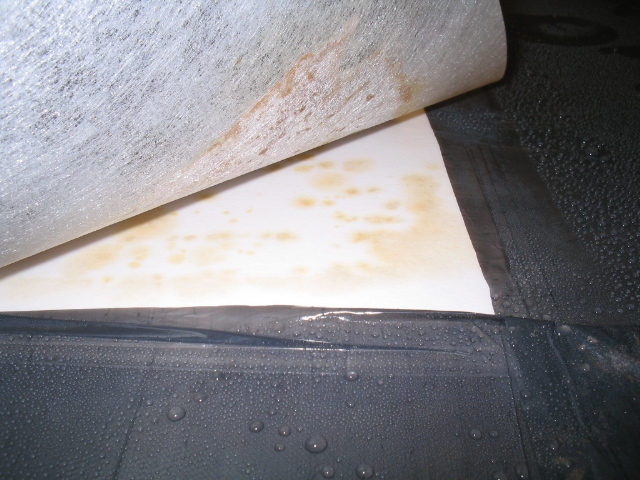 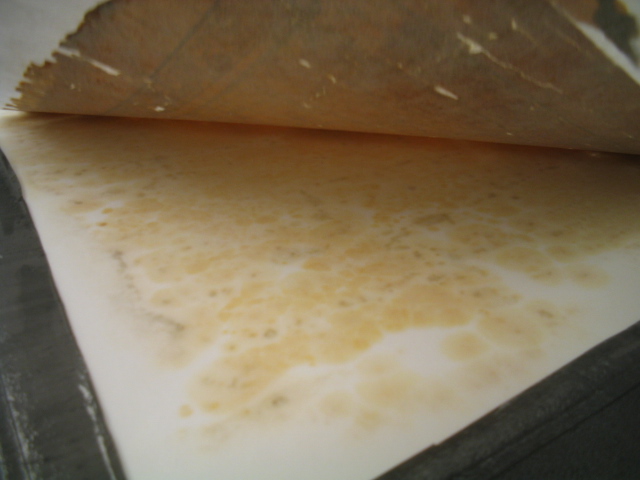
The washing process took most of the day to complete. Thick and absorbent blotter paper had been placed underneath the map to absorb the dirt running off the paper. The blotter had to be switched out every 30 minutes or so, until a fresh blotter was no longer brown or yellowish. Once the map was cleaned it was left to dry over night. The last step in treating the Sidney and Neff map was to line the back of the map in Japanese tissue paper. This would provide the much needed stability for the paper, as well as keeping the map all in one piece. Additionally, using wheat starch paste makes the whole process easily reversible. 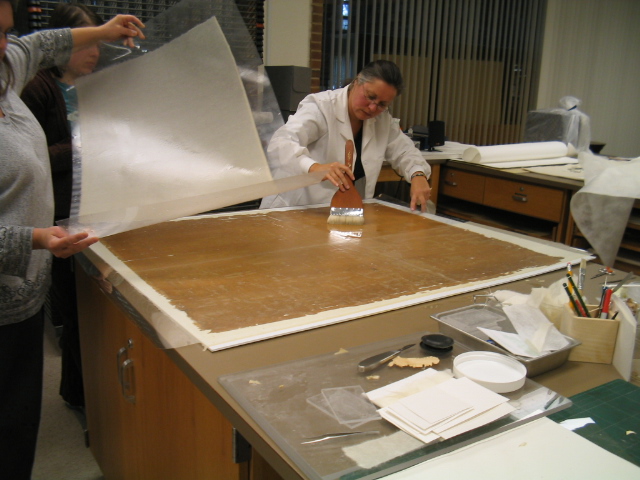
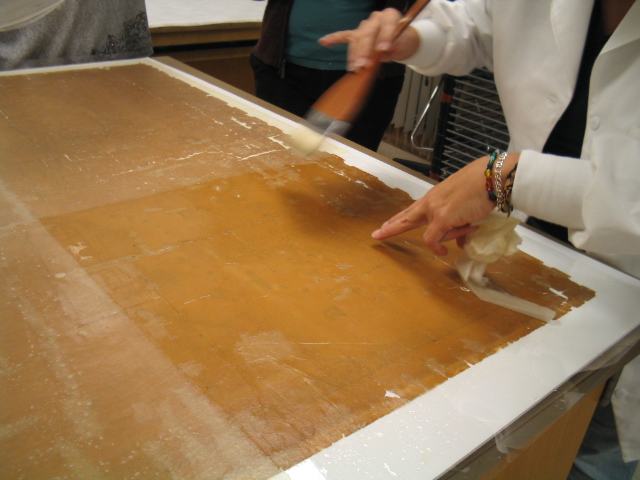 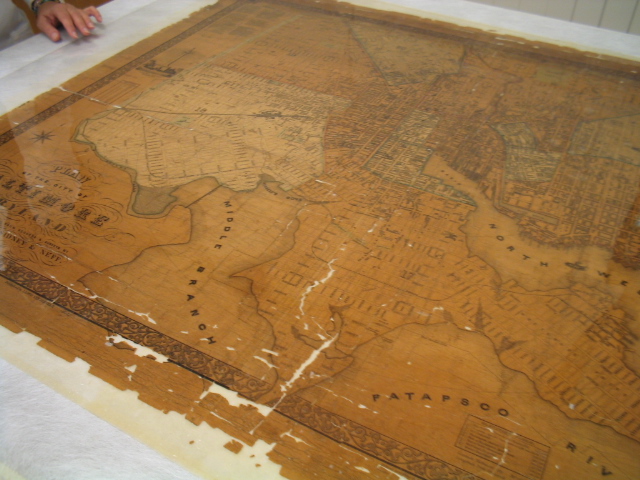
The map was laid on its front with the backside facing up and sprayed with de-ionized water. Because no single piece of Japanese tissue paper was big enough to cover the whole map, four quadrants of Japanese tissue were water-torn and then wheat starch paste was lightly painted on. The Japanese tissue paper was then transferred to its corresponding quadrant on the map. Once all the pieces were placed, the map was left to dry. |
Mainpage